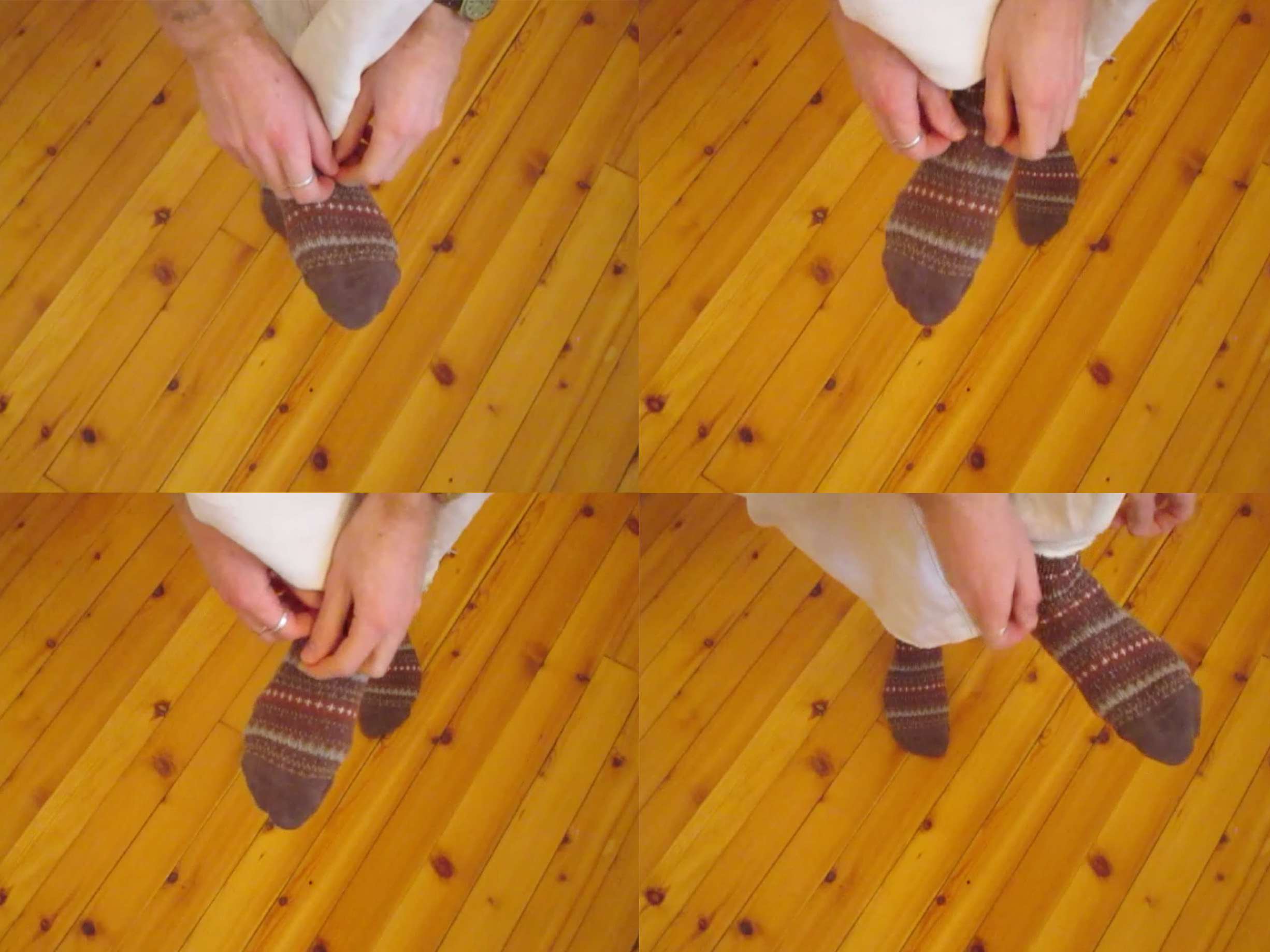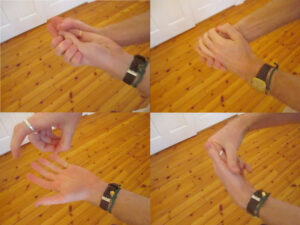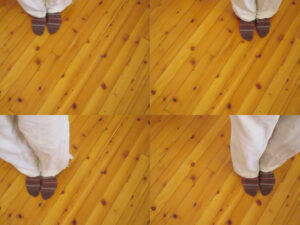From Routine to Ritual: Situating Habits as Performance Practices

Summary
This toolkit encourages participants to rethink their conception of routine and habitual actions through the deliberate repetition of these actions, prompting learners to consider how these embodied actions can be generative and reflective practices in and of themselves.
Overview
How often do you reflect on the habits in your everyday life that seem to go unnoticed? In this toolkit, you will focus on these seemingly mundane physical actions and explore how the meaning of these actions changes when you remove these actions from their contexts of productivity or habit. Repetition and duration are key tenets to many performance artists’ practices, and this exercise will help you begin to understand how embodied actions, even the most mundane, can inform performance practices.
Materials
All you need to complete this toolkit is your own body, critical reflection, and a routine you partake in daily.

“Washing Hands” by Preston Taylor is licensed under CC BY-SA 4.0.
Instructions
1. (5 minutes) Think of a mundane routine that you partake in daily.
This action may take anywhere from 5 seconds to 3 minutes to complete in its entirety. Ideally this should be the first thing that comes to your mind. (for example: washing dishes, brushing your teeth, walking from your bed to your bathroom)
2. (10 minutes) Repeat this action for the duration of 10 minutes.
You should ‘act’ out your action without any props. It is important to set a timer so you do not worry about the time limit and can focus solely on the action you are repeating.
3. (5 minutes) Opportunity for Reflection.
Address the following guiding questions and answer them for yourself. There is no ‘right’ or expected answer; simply use these questions to think critically about your experience. If completed as a group, use these questions to guide a dialogue comparing your experiences.
-
- How did you feel while partaking in the performance?
- Did you start unsure or distracted by the physical act of repetition? Did you begin to forget about the repetition itself?
- How does this make you rethink your approach to this habit, and does it make you rethink other mundane actions you often are not actively aware of, or ‘blow past’ in your daily life?
- If this exercise felt laborious, and you remained conscious of your activity throughout, consider how your body felt while engaging in the performance. Did your legs/arms/head feel heavy? Was your action felt bodily? How did this awareness of your body make you feel?

“Walking in a Square” by Preston Taylor is licensed under CC BY-SA 4.0.
Curious to learn more about this topic?
Below are some materials to look into (watch, read) to further deepen your engagement with performance art and embodied practices.
- Bruce Nauman’s Bouncing in the Corner No. 1 (1968) (Note: this resource is for educational purposes only, do not distribute or share the video in this link)
- This seminal work by Nauman showcases the artist repeating an action for one hour: Nauman repeatedly falls backwards into the corner of a wall in his studio, whereupon falling into the wall he pushes his body forward to return to standing position.
- Francis Alÿs’ Cuentos Patrióticos
- In this work, Alÿs utilizes the repeated action of leading sheep around a flagpole to explore historical allegory and political commentary, demonstrating how repetitive actions can be used as a medium to explore other topics. Also see Paradox of Praxis 1 (Sometimes making something leads to nothing).
- Tehching Hsieh and Marina Abramović in Conversation
- In this conversation, these performance artists discuss their philosophies of performance and the role of duration in their practices. Both of these artists deal with duration in their performance works.
- Chantal Akerman’s film Jeanne Dielman, 23 Quai du Commerce, 1080 Bruxelles.
- Specifically consider this scene from the film, where the main character Jeanne Dielman deliberately peels potatoes. Akerman is focused on the repetition of gestures as revealing into the inner psyche of the protagonist, exploring what can be revealed through this ritualization of the mundane.
From Routine to Ritual: Situating Habits as Performance Practices (2025) by Preston Taylor is licensed under CC BY-SA 4.0.
("Tying Shoes" by Preston Taylor is licensed under CC BY-SA 4.0. )


